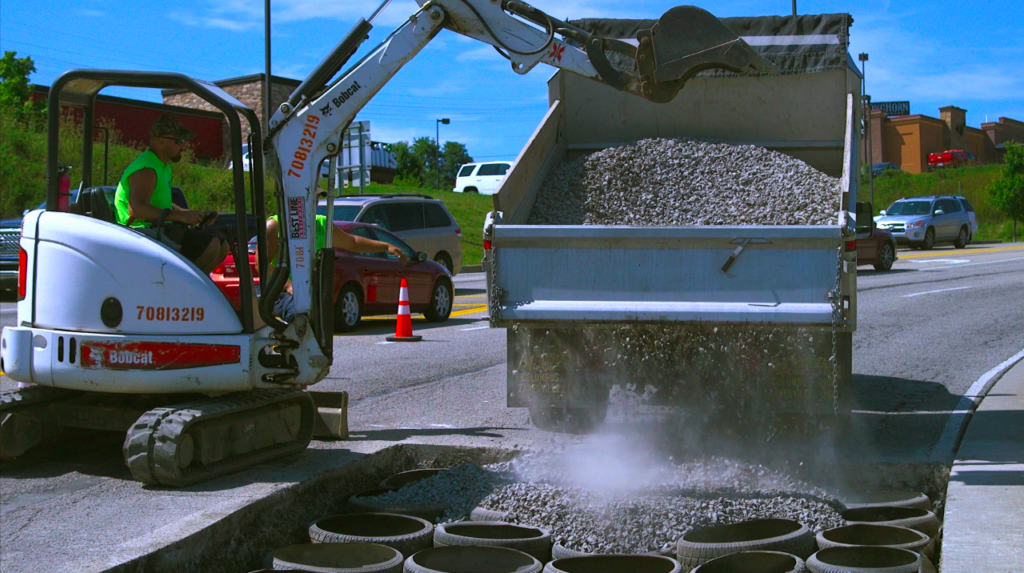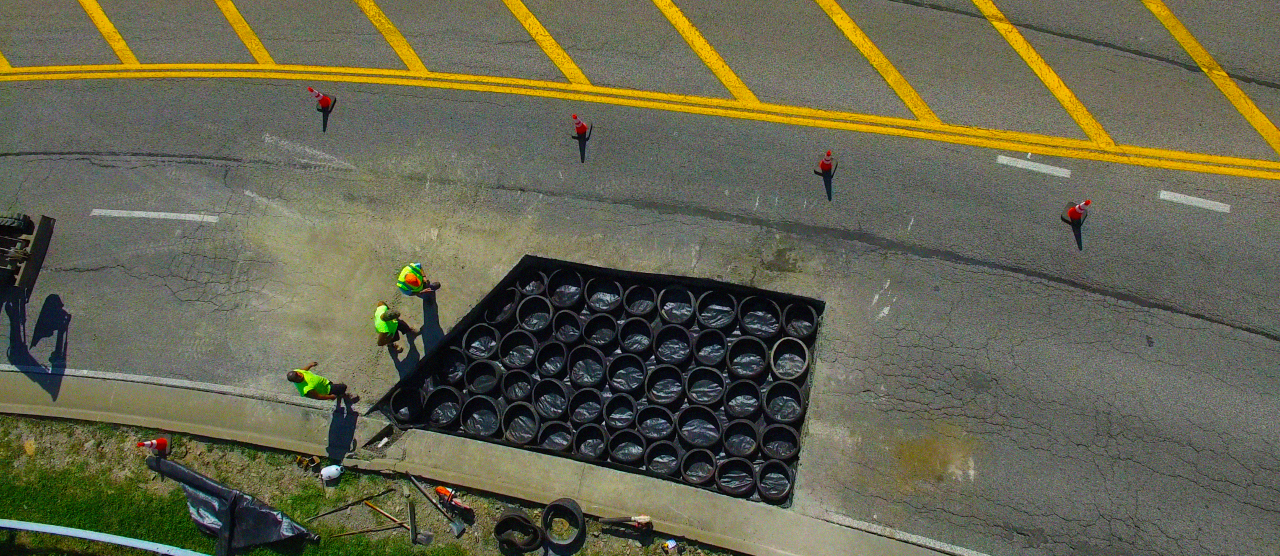MORGANTOWN — West Virginia-based company, Mechanical Concrete, is on its way to reshaping railroad-maintenance construction after being licensed to railroad service contractor, EnviroRail.
“For Mechanical Concrete, this could be a major stepping stone for the national market,” said Sam Bonasso, inventor of Mechanical Concrete.
Rather than allowing used auto and truck tires to go to waste, Mechanical Concrete takes the tread portion of the tires and fills the cylinder with stone. The stone hardens instantly inside of the cylinder, creating a sturdy and long-lasting product.
This product can then be used in making foundations, road bases and repairs.
This green and sustainable method caught the attention of the Omaha, Nebraska-based EnviroRail. Jason Luce, president and COO of EnviroRail, said because of the technology’s efficiency, durability and reduced cost it is an effective way to reduce the costs of railroad maintenance compared to other methods.
“Mechanical Concrete was something I found when researching a new way and an innovative process and product to bring to the railroad industry,” Luce said. “I knew Mechanical Concrete could be a game changer and a new way of doing railroad maintenance.”
Bonasso first came up with the idea for Mechanical Concrete in 1998 when the WV Division of Highways needed to dispose of scrap tires from around the state. At the time, he was working as the WV DOT Secretary, and wanted to come up with a method to reuse the tires.
He then came up with the idea to fill the tires with stone and bury them in the base of roads. Initially, he was told this method would lead to soft spots in the road and water drainage problems.
A few years later, Bonasso began thinking about how to overcome these obstacles. He discovered by removing the sidewalls from the tires, both of these problems could be solved.
“That [is] how the journey to Mechanical Concrete began,” Bonasso said.

Mechanical Concrete has since become a product used in civil engineering products around the country. In 2016, it was voted as the Most Feasible Green Engineering idea in the Infrastructure Grand Challenge Innovation Contest by the American Society of Civil Engineers. It has been tested in several areas, including construction and maintenance of roadways and highways, wall facing, bridges, slope and channel erosion protection.
Luce said in comparison to similar products, Mechanical Concrete is one of the most environmentally-friendly products available. He said other methods need to be produced, whereas Mechanical Concrete consists only of reused materials.
Marion Zuccari, president of Tireland of Morgantown, supplies Mechanical Concrete with the cylinders. He said for each one mile of road constructed using this method, 12,000 tires are needed. While that may sound like a lot, Zuccari said the supplies are plentiful.
“There is one disposable tire for every human being in the United States every year,” Zuccari said. “That’s over 300 million tires.”
Zuccari said the unused scraps typically end up being burned, buried or are made into mulch or turf. He said with Mechanical Concrete, all of the scrap tires which would otherwise go to waste have a use.
Luce said Mechanical Concrete has only been tested in civil engineering projects prior to the partnership. The next step is to find the first customer who can test the product’s load-bearing capacity in a railroad setting.
“We are talking maybe a month as far as railroads knowing that the product is even available to their companies or to the industry,” Luce said. “It is extremely new.”
As Mechanical Concrete enters into new territory and into the national market, it is on track to be the beginning of a sustainable, affordable and efficient product in the railroad industry.
Tweet: @GabbyABrown_
To learn more about Mechanical Concrete see this video by The Dominion Post:




